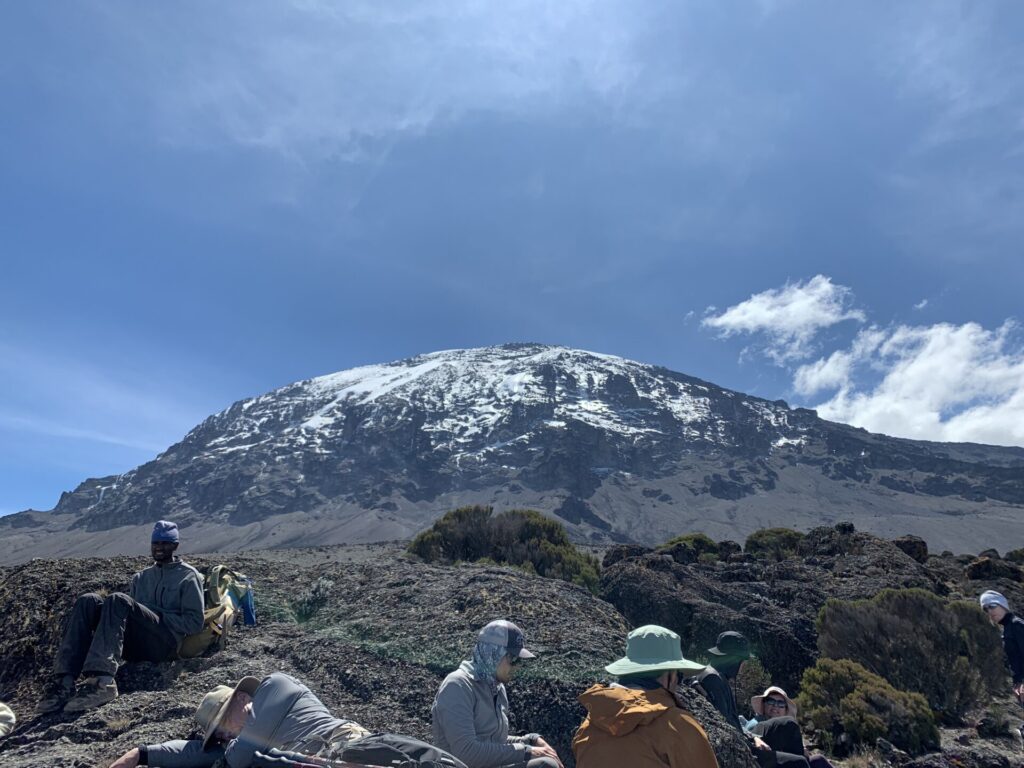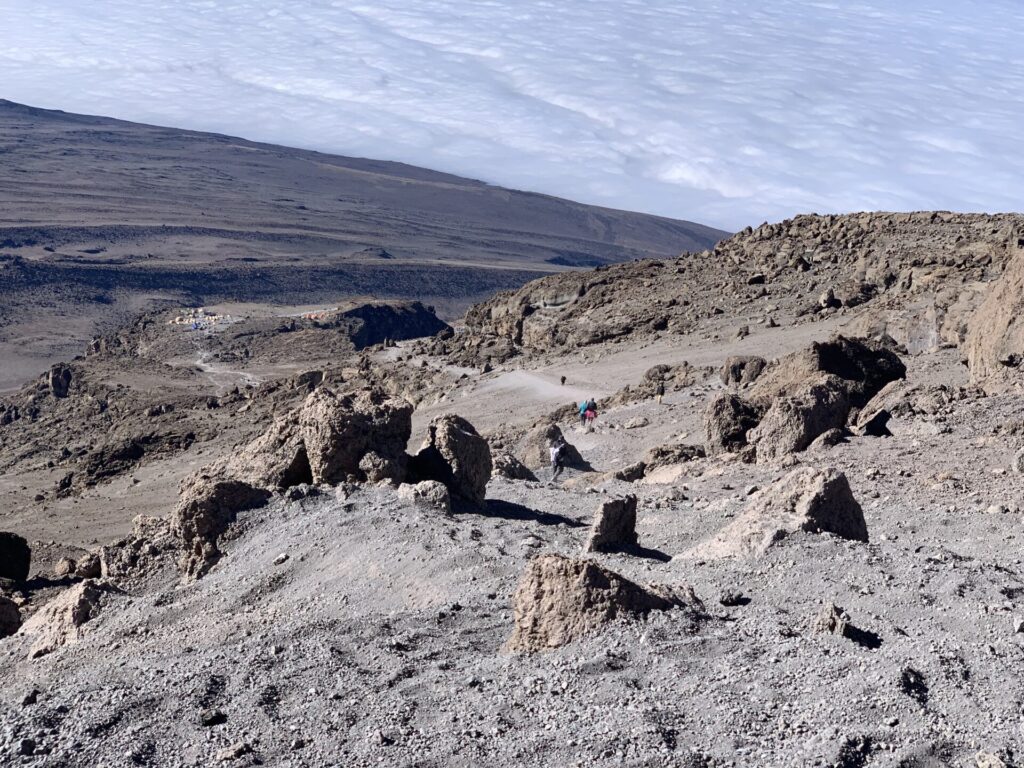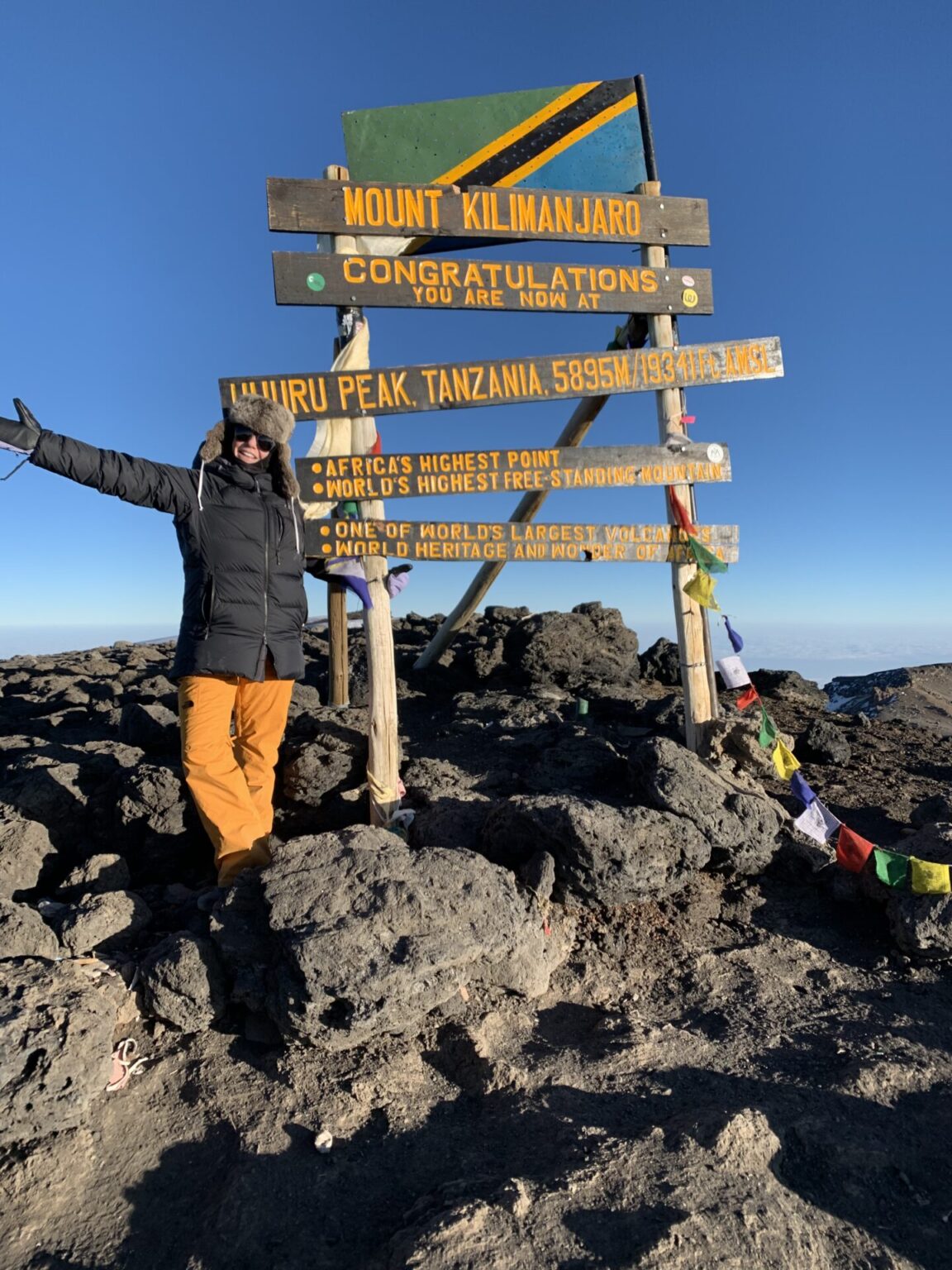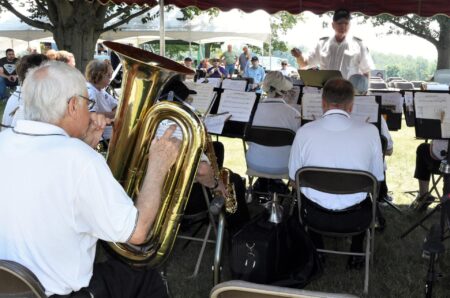WAYNESBORO – Most people haven’t been to Africa in two lifetimes. Amy Kowallis has been to the continent twice in one lifetime.
She spent a couple months in Zimbabwe in 2013 working at a wildlife rescue and rehabilitation center. It was migration season for zebras In July of this year, Kowallis traveled to Tanzania and experienced something that is on the proverbial ‘bucket list’. Kowallis and long-time college friend Julia Shildmeyer-Heighway climbed Mount Kilimanjaro.
As if that was enough, when the climb was barely in her short-term memory, Kowallis spent a week at a lodge in Kenya operated by an acquaintance of her friend and went on a safari before embarking on a plane and flying back to the states.
“I like the adventure and to challenge myself to do something I’d never done before,” said Kowallis, a 1981 graduate of Waynesboro Area Senior High School. “It’s one of the Seven Summits, one of the highest ones. It’s the tallest mountain in Africa.”
The east African nation lies on the Indian Ocean and is bordered by Kenya to the north, Zaire to the west and Mozambique to the south. Mount Kilimanjar, a dormant volcano, is located within Mount Kilimanjaro National Park.
Kowallis met Shildmeyer-Heighway her freshman year at Indiana University in Bloomington, Indiana. They have known each other for 40 years and, as luck would have it, there was one opening left on the guided tour up the mountain. Her friend had already booked her excursion.
The timing of the climb came at an opportune time, coming a month after the rainy season in Tanzania. Kowallis said there was no precipitation until the final day. She also said that the temperatures throughout the climb were tolerable.
Sleeping in tents with no restroom facilities, it was a step back in time. Thanks to the presence of guides, hikers always had a helping hand ready in case they had trouble traversing over countless rocks to the 19,341-foot summit.
The climb took about a week. The descent was quick, taking only one day.
“We left June 30 and started the climb in Moshi, Tanzania. We were there for two days before the hike. We wanted to acclimatize.,” Kowallis explained. “We started the hike up the mountain on July 2 and finished on the tenth.”
Kowallis said there were 14 hikers in the guided tour (representing the United States, Canada, Mexico, England, Poland and Hungary) and some 40 or 50 crew members (cooks, guides and porters). Hikers had their duffel bags carried for them, but the hike was on them. Fortunately, all 14 made it to the top and back.
“It was so much harder than I ever thought it could be,” Kowallis said. What we really didn’t expect, the amount of climbing you do, and the rocks. You were climbing walls of rocks all the time; you have to lift your leg more than a step or two. You’d get to a summit, and there would be another wall you’d have to climb. We would climb for six hours a day. Every once in a while there would be a flatter surface. You were going up and down the whole time.
“It was so challenging. I don’t even know how I did it. After the first day (four hours), I literally was almost panicking. I started asking myself: ‘What did I get myself into. I don’t know if I can do this.’ You just get up the next morning and go. You do what they tell you what to do. The guides were fantastic.”
One of the highlights of the climb for Kowallis was the Baranco Wall, also known as the Kissing Wall.
“At a certain point you are hugging the rock because the trail is super, super narrow and only one person can fit,” Kowallis ssaid. “It was so high up, and you’d look down and there were no guardrails, no safety nets. If you would slip and fall you could easily go over the edge of something and die.
“The entire time your are doing this, the porters are going past you. They were carrying huge duffel bags, baskets, cooking utensils, portable toilets, and they are climbing just like we are and they’re in sneakers.”
Kowallis was one of the oldest hikers at 58 years old. Shildmeyer-Heighway is 59, and another was 64.
She wasn’t one of the oldest to reach the summit. That goes to Anne Lorimor, who reached Uhuru Peak in July 2019. The oldest man to summit Mount Kilimanjar is American Fred Diselhorst, who was 88 when he reached the top in July 2017.
But age didn’t deter Kowallis from making the journey that began with a single step.
“I’ve always been in shape,” she said. “I like to swim, I lived in Key West for six years so I was always riding my bike. My job was super active. I don’t feel like I’m that old. I’ve always been active.”
Prior to the trip, Kowallis started working out with a personal trainer with this goal in mind and started hiking where she lives.
“I started doing it with a weighted pack, eight miles a day,” she said.
The climb wasn’t as challenging as the Himalayas, but the high elevation, low temperature and high winds made the climb dangerous in its own right. One risk to hikers is altitude sickness, also known as mountain sickness.
Describing the decision to climb Mount Kilimanjaro as a “whim,” Kowallis wasn’t naïve to think that, even with guides to help them during the adventure, hiking up a nearly 20,000-foot mountain would not leave her thoroughly exhausted.
Hikers got little sleep, and they had to respond with promptness to the call to start walking. There was no time to lag, as they had to keep with the itinerary – to get to the summit.
Kowallis, whose life itself has been an adventure (she moved to New York City after she gradated college to pursue an acting career and later lived in Key West for six years before moving back to her lifelong home county) was beside herself with elation just to be there. She was also mentally and physically prepared for the grueling week-long climb. Thankfully, the weather cooperated.
“We didn’t have any rain until the last day. We really lucked out. It was only hot maybe the first day, because even the first night when we got to camp we were wearing jackets. From then on, we always had a coat on; sometimes at night we would put on our heavy-duty summit clothes. We’re sleeping in tents, so you would sleep in a lot of clothes. Summit night is the coldest.”
The hikers, who used trekking poles to aid them in the climb, began the final ascent to the summit at midnight, hiking for nearly seven hours.
“We climbed in the dark and got to the top as the sun was coming up,” said Kowallis. “It was pretty cool.”
It was a once-in-a-lifetime moment.
“We took five-or-10 minute breaks,” she recalled. “We were only at the top for 15 or 20 minutes. They don’t want you to be at the elevation for any extended among of time. Plus, it’s crowded. There were people everywhere. You take your pictures and start heading down. It was two days of non-stop hiking and going down was so hard.”
Kowallis said the time involved on the way up was to get hikders acclimated to the temperature changes and the air density.
“We finally got back to base camp at around 10 or 11 the next day,” she said. “We could rest for an hour and then had to pack up and go and then hike another six hours to get down to a safe elevation. That was the worst time, because you’re so tired first of all – only two hours of sleep before you started to hike.”
Her experience the second time around in Africa perhaps brought back some of those vivid memories in Zimbabwe where she worked with a variety of animals, from lions to ducks.
Then, fast forward to this past summer, Kowallis saw many of the same animals on the safari.
“I saw elephants, hippos, lions, leopards – it was incredible,” Kowallis said. “I’d love to go back to Africa and spend some time.”
She just won’t be climbing Mount Kilimanjaro.
“I remember at the end I said I will never do this again in my entire life,” she said.
Kowallis said her parents (Gerald and Mary Jo) were “totally supportive.” She said her brother and sister came to Pennsylvania to help care for their parents while Kowallis was away.
“Once I got home, I slept like crazy,” Kowallis remembered. “It took me a couple weeks to feel rested again.”
























